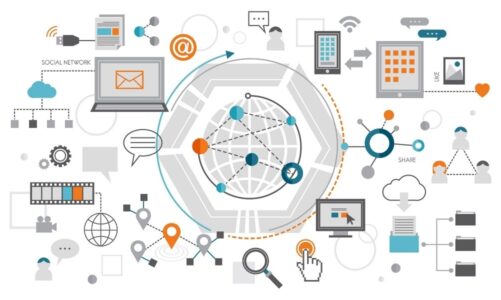IT visibility empowers teams with comprehensive system data, giving them the time they need to spend on analyzing issues and delivering customer value. It also helps proactively address technical debt, ensures compliance, and drives cost savings.
Table of Contents
Real-Time Information
To monitor and manage complex IT infrastructures, businesses need comprehensive IT visibility. However, achieving IT visibility in distributed environments poses significant challenges.
Achieving IT visibility requires integrating data from multiple tools — service tickets from ITSM platforms, logging and observability from monitoring tools, changes from the CI/CD platform, and more. Often, these tools use different systems that don’t communicate well, leading to siloed information.
Unified visibility makes it easier for teams to work together by providing one comprehensive view of IT landscapes. For example, security engineers can see network anomalies identified by service assurance teams. This helps to lower false positives during troubleshooting and improve the efficiency of both teams. Real-time data also increases the speed and accuracy of problem detection and resolution.
Enhanced Security
With a unified platform like the one offered at sciencelogic.com, security and operational data flows freely between systems. This minimizes overload and helps operators respond faster to incidents, enabling them to provide better support and results for your business.
Complex and distributed IT environments make achieving visibility challenging. This is because assets are spread across locations and may utilize diverse technology stacks with varying monitoring capabilities, protocols, and data formats.
Investing in a unified IT infrastructure with comprehensive visibility capabilities is crucial to overcome these obstacles. With centralized monitoring, the right tools, and advanced ITAM solutions, businesses can achieve complete IT visibility to manage their dynamic IT landscapes efficiently. This level of IT visibility empowers them to optimize performance, control costs, and ensure security in today’s complex digital landscape.
Scalability
Scalable functionality is important because it allows businesses to expand without being hampered by limited workforce, resources, or infrastructure. This can include software tools that automate processes, improve customer service, help leaders make high-level decisions, and align departments with one another.
In complex, distributed environments, scalability involves providing an accurate view of the entire IT infrastructure. However, this is often challenging because data is stored in different systems and formats, and centralized monitoring isn’t always possible.
Achieving scalable functionality in a unified platform requires standardization, automation, and visibility. By doing so, you can optimize and monitor your IT infrastructure, increase your performance, and ensure your business can reach its growth goals.
Flexibility
With a full-stack IT visibility solution, it is possible to quickly pinpoint the exact cause of downtime and identify what infrastructure components or cloud resources are involved. This enables IT teams to efficiently engage stakeholders to address the issue and minimize service outages.
In today’s wildly complex IT landscape, it’s impossible to navigate without clear IT visibility. Central monitoring, the right tools, automation, and a clear strategy enable businesses to navigate their IT environments deftly.
Unified file visibility also enables businesses to identify abnormal behavior that could signal insider threats or data leaks. It also enables them to optimize infrastructure by simplifying how they manage on-premises and cloud resources. This results in significant time savings and greater IT operational efficiency. However, it all starts with user adoption.
Scalability
Scalability measures a system’s ability to handle increasing load without sacrificing performance and efficiency. It also refers to the flexibility of a software program or network to adapt and expand with a changing business model or shifting team structures.
Complex distributed environments often contain diverse technology stacks and legacy systems that generate a massive volume of data. Achieving IT visibility in these environments requires robust tools and strategies to gather data and derive valuable insights effectively.
Full stack visibility allows IT teams to spend less time addressing problems and more time on improving the infrastructure. This enables them to increase the resolution speed, minimize downtime, and improve overall application availability. It also helps identify unforeseen security issues, such as insider threats and potential data leaks.



